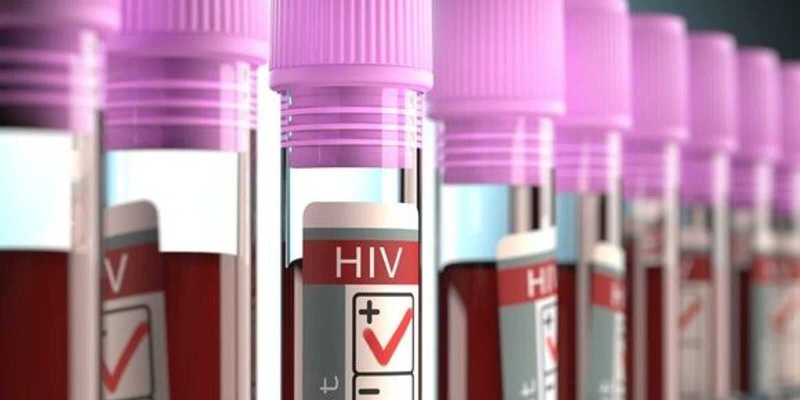Scientists cured HIV in mice. They say a human cure could be next.”
– GOOD Magazine, July 13, 2019
“Hopes rise for AIDS cure after bone-marrow transplant rids man of HIV”
“New breakthrough could cure HIV”
“Scientists develop drug that ‘could cure HIV and AIDS’”
– The Independent, November 3, 2016
These are all exciting headlines from the Internet heralding a “cure” for a terrible disease that has long lacked a cure. The words fuel the expectations and hopes of some 37 million people around the world who live with HIV infection. The best option that these people now have is managing the symptoms of their complex illness as effectively as possible with a slew of expensive drugs. Increasingly, potential cures based on genetic manipulation are being reported. The most highly publicized recent example is the March 2019 report in Nature of the second case of long-term HIV-1 remission in a human patient following CCR5Δ32/Δ32 hematopoietic stem-cell transplantation. Another example is the July 2019 report in Nature Communications of the first-ever elimination of “replication-competent” HIV-1 DNA from the genomes of living animals.Yet, the frustration of patients can be excused, because the practical application of much-touted research into HIV/AIDS cures always seems to be years away—never in the here and now. This article examines such prominent genetics-based research, focusing on the difficult practical challenges that prevent the research findings from being applied to patients in the clinical setting.
Treatment versus cure
The primary treatment for HIV-positive people currently consists of the daily use of a combination of antiretroviral medications, known as antiretroviral therapy (ART). These prescription drugs can reduce the amount of HIV in the blood to very low levels—levels that may become undetectable in the assays of some patients. The typical ART regimen consists of three different drugs from at least two of seven classes. These drugs must be taken every day for the rest of the patient’s life in order to keep suppressing the viral load—a requirement that many patients have difficulty complying with. Many patients also have difficulty affording the drugs, with average wholesale prices per drug per month ranging from hundreds of dollars to more than $4000. Furthermore, there are numerous potential adverse effects of ART medications, ranging from relatively minor nausea, fatigue, and muscle pain to possibly fatal conditions associated with swelling of the throat, eyes, and face.
These problems emphasize the need for a “functional cure” for patients with HIV/AIDS—which would permanently maintain viral loads at undetectable levels without the need for continued medication use. That is the goal of genetics-based research.
Genetics-based “cures”
Although there are several avenues of genetics-based research into HIV/AIDS cures, the area that has received the most media attention—because of two reported “cures” over a period of more than 10 years—involves CCR5Δ32/Δ32 hematopoietic stem-cell transplantation (HSCT).
In March 2019 in Nature, a team of researchers led by Ravinda K. Gupta of University College London and Eduardo Olavarria of Imperial College London reported the second case of long-term HIV-1 remission following HSCT. The only previous such case had been reported by Hutter et al. in Berlin, Germany, in 2009. That famous “Berlin patient” was Timothy Ray Brown, who was treated in 2007 and continues, as of 2019, to show no signs of HIV infection—12 years after he stopped taking ART drugs. The Berlin patient has been widely considered the only case of a cure for HIV/AIDS. The unnamed “London patient” offered a second case of a cure—though he had been “HIV-free” without the use of ART drugs for only 18 months at the time of the case report.
The Berlin patient had undergone two transplantation procedures involving the use of hematopoietic stem cells taken from the bone marrow of a donor with a rare homozygous mutation in the HIV coreceptor gene CCR5. This gene normally encodes a receptor protein on immune cells to which HIV binds during the infection process. The mutation is known as CCR5Δ32 (or simply Δ32). When the mutation occurs on both copies of the CCR5 gene, it confers resistance to HIV by blocking expression of the gene and, hence, eliminating functional receptor proteins on the surfaces of the immune cells. HIV cannot infect immune cells that don’t have the receptor protein.
For the Berlin patient, the HSCT procedures were performed to treat the man’s HIV-associated acute myeloid leukemia, a type of cancer of the immune system. With each stem-cell procedure, the Berlin patient received aggressive total body irradiation. He also received intensive chemotherapy. The result was long-term remission of the patient’s HIV infection, with disappearance of HIV in his blood and the re-establishment of healthy immune-cell populations. The vast majority of his new immune cells were derived from the donor stem cells, and they possessed the same kind of HIV resistance as the donor cells.
For the London patient, the researchers used a single HSCT procedure with stem cells from the bone marrow of a donor with the homozygous CCR5Δ32/Δ32 mutation. The treatment, designed to address his Hodgkin’s lymphoma, also included chemotherapy. Unlike the Berlin patient, he received no irradiation. The patient developed mild symptoms of graft-versus-host disease as his HIV infection went into remission. Sixteen months after HSCT, ART was stopped. Eighteen months after stopping ART, the HIV infection remained in remission, with no trace of the virus in his blood other than intermittent detection of residual levels of HIV RNA and DNA.
Challenges in clinical application
While the word in the HSCT case reports that grabbed the attention of the mainstream media was “cure,” many experts in the field caution that scaling up the positive outcomes from the reports into clinically efficacious and safe treatment options for the wider population with HIV/AIDS remains many years away—or it may not be possible at all. This caution was, of course, absent from the exciting headlines, though the more carefully written news stories mentioned it within their descriptions of the research. The numerous complexities and other problematic considerations that were not adequately emphasized or explained in many news reports about the genetics research include the following:
The mechanisms behind the HSCT results are not fully understood. What precise role did radiation therapy and chemotherapy play compared with the HSCT? What were the exact actions of the donor stem cells versus the patients’ own immune cells? How significant was the graft-versus-host attack on the immune cells in terms of ridding the body of HIV-infected cells? Without clearly understanding the mechanisms, it is impossible to develop a clinically applicable cure. The lack of understanding also suggests that it is possible that the virus might become reactivated at some point. Thus, the “cure” may not be permanent. The London researchers acknowledged that there was a “remote” chance that the residual levels of the virus might eventually lead to relapse in their patient.

It is relevant that it took 12 years to replicate the Berlin results with the London patient. The Berlin and London patients had certain things in common that many other HIV/AIDS patients do not share. Both individuals had immune-cell cancers and HIV strains that used only CCR5 and CD4 receptor proteins to infect immune cells. These characteristics made these two patients uniquely amenable to the HSCT technique involving transplantation of stem cells from donors who had the Δ32 mutation in both copies of the CCR5 gene. In addition, the Berlin patient may have benefitted from having a Δ32 mutation of his own in one copy of his CCR5 gene.
There are sundry complicating details of this kind in the HIV infection process, HIV genetics, and patient immune genetics that make each individual case different from other cases. This means that cures that might work for some patients will not work for other patients. Because of the many variables, each stem-cell technique would have to be carefully customized to match each particular patient—requiring levels of knowledge and understanding that remain beyond our grasp.
The HSCT procedure that was used in the case reports is extremely complex, risky, and expensive. Brown nearly died as a result of the rigorous treatments that he was given, and he was left with neurological injuries and other physiological problems. The immune systems of both patients were essentially “gutted” in the drastic approaches that were taken. Are such drastic, dangerous methods necessary? Considering the effectiveness of current ART regimens as long-term treatment, no healthcare professionals would consider it wise or practical to replace those treatment regimens with a costly, novel, little-understood stem-cell “cure” that might lead to further disease complications or even death. Genetics-based therapies certainly hold no advantage in terms of cost. Most of the gene therapies that have been approved by the U.S. Food and Drug Administration for other conditions cost more than $2 million because of various technical complexities.
Other research
Other genetics-based research into HIV/AIDS cures includes techniques for modifying genes in the patient’s own cells that facilitate HIV infection or replication, as well as the insertion of protective genes, the engineering of immune-enhancing genes, and the manipulation of HIV genes to turn some “off” or “on.” Some gene-editing approaches involve “cutting” HIV DNA out of infected cells, thereby removing the virus from the body. The CRISPR gene-editing technique, combined with long-acting slow-effective release (LASER) ART, was behind the July 2019 report by researchers at Temple University and the University of Nebraska Medical Center that they had, for the first time, eliminated HIV-1 DNA from the genomes of living animals (mice). That research still had to be duplicated with non-human primates before advancing to any human clinical trials.
The hopes of millions of people with HIV/AIDS are wrapped up in such research, but none of the research will produce clinical applications anytime close to the artificial, often-cited deadline for finding a cure of 2020. When such unrealistic deadlines are quoted by people who should know better, false hope is engendered.
As we wait for a cure that might eventually be available in the future, patients must be sure to read news reports with great care. As always, it is wise to remember that media reports of new medical findings should, if honest, include qualifying words and phrases, such as “these results suggest that a cure may be possible some day in certain patients after additional research solves remaining problems.” At a minimum, these kinds of qualifiers should be used in news reports if the reporters are unable to explain the detailed complexities of the research.
With such qualifiers in mind, we can still hope, but our hope will be grounded in reality.
A.J. Smuskiewicz is a freelance writer and editor specializing in science, medicine, world events, and cultural issues. He can be found on his website
































